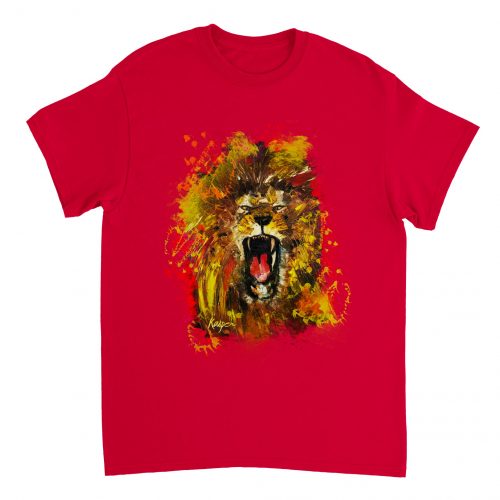
As an artist, one of the most challenging aspects of my own career has been pricing original artwork.
Not only do you need to consider the time, effort, and materials that go into creating a piece, but you also need to take into account the market, your audience, and your costs. In order to price your art effectively, it’s important to have a clear understanding of the value of your work and to be aware of the factors that can impact your pricing.
In this guide, we will explore eight principles for pricing original art. From understanding the value of your work and researching the market, to offering a range of prices and staying competitive, these art pricing rules can guide & help you to set prices that are fair, reasonable, and profitable. By following these art pricing guidelines, you can ensure that your art is valued and that you are able to make a living from your passion.
- Understand the value of your work: Before you can begin pricing original artwork, it’s important to understand its value. This includes the time and effort you put into creating the piece, the materials you used, the skills and techniques you employed, and the uniqueness or rarity of the piece. All of these factors should be taken into account when determining the value of our work.
- Research the market: In order to price art effectively, you need to have a good understanding of the market and what other artists are charging for similar work. This can help you to determine what is reasonable and realistic for your own pricing. Consider attending art fairs and exhibitions, joining artist organisations, and conducting online research to learn more about the market.
- Consider your audience: Pricing original artwork should be appropriate for your target audience. If you are selling to collectors, you may be able to charge more than if you are selling to a general audience. Consider the purchasing power and expectations of your audience when setting your prices.
- Factor in your costs: In addition to the value of your work, you also need to consider your costs when pricing your original artwork. This includes the cost of materials, any fees for exhibitions or art fairs, and any other expenses associated with creating and selling your art. Make sure to include these costs in your pricing to ensure that you are making a profit.
- Offer a range of prices: Not all of your artwork will be the same price, so consider offering a range of prices for different pieces. This can help to appeal to a wider audience and make your art more accessible. For example, you might offer smaller, less complex pieces at lower prices, and larger, more complex pieces at higher prices
- Be flexible: The price of your art is not set in stone. As you gain more experience and success, you may be able to increase your prices. And if you are having difficulty selling a particular piece, you may need to adjust the price to make it more appealing to buyers. Be open to negotiation and be willing to adjust your prices based on market conditions and your own goals.
- Consider payment options: In addition to the price of your artwork, you also need to consider how you will accept payment. Will you accept cash, credit cards, or checks? Will you offer discounts for bulk purchases or payment in full? These are all important factors to consider when pricing your art.
- Stay competitive: Finally, it’s important to stay competitive when pricing your artwork. This means keeping an eye on the market and making sure that your prices are in line with other artists who are selling similar work. By staying competitive, you can ensure that your art is appealing to buyers and that you are able to make a profit.
In conclusion, leanring to price our artwork can be a challenging but essential part of being an artist. By understanding the value of your work, researching the market, considering your audience, and staying competitive, you can set prices that are fair, reasonable, and profitable. By following these eight principles, you can ensure that your art is valued and that you are able to make a living from your passion. In my shop you can see examples of how I am pricing art: https://rudolphkasper.com/shop
Another key factor to consider when pricing art prints, paintings and merchandise products is the size of the piece. Many artists use the square inch method, which involves multiplying the height and width of the piece to determine the total square inches. This number can then be used as a starting point for setting a price. For example, if a piece is 10 inches by 10 inches, the total square inches would be 100, and the price could be set accordingly by setting a set price per square inch and multiplying the total square inches by your square inch price. This method can be a useful way to ensure that larger pieces are priced appropriately, and that the price reflects the size and complexity of the work.
In addition to these eight rules of art pricing guide, there are many other factors that can impact the price of your artwork. From your reputation and experience, to the demand for your work and the current state of the art market, there are many variables to consider in pricing art prints, paintings and merchandise products. But by following these guidelines and being open to negotiation and adjustment, you can ensure that your art is valued and that you are able to make a living from your passion.
One of the most important things to remember when pricing art prints, paintings and merchandise products is that it’s not just about the money. As an artist, you are creating something unique and personal, and the value of your work goes beyond the price tag. By understanding the value of your work and setting prices that reflect that value, you can ensure that your art is valued and that you are able to make a living from your passion.
In the end, pricing artwork is not an exact science, and there is no one-size-fits-all approach. I personally use my own unique combination for pricing art prints, paintings and merchandise products . I calculate size of the art, medium and working hours together and from that I have a system that works well for me and is fairy transparent. But by following these eight art pricing guide rules and being open to negotiation and adjustment, you can ensure that your art is valued and that you are able to make a living from your passion. So take the time to understand the value of your work, research the market, consider your audience, and stay competitive, and you can set prices that are fair, reasonable, and profitable. I wish you best of like in finding a rule that fits you will for pricing artwork.








